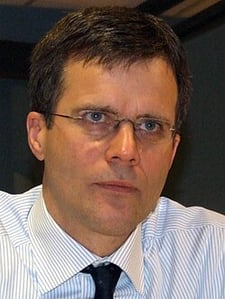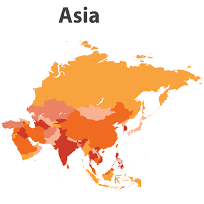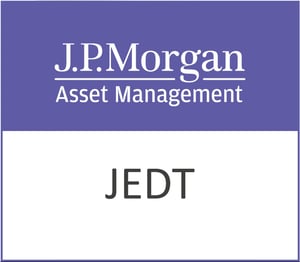Fidelity Emerging Markets Limited (LON:FEML) has today announced its final results for the year ended 30 June 2023. See below:
Financial Highlights:
- The net asset value (“NAV”) of the Company returned -2.6% for the year ended 30 June 2023, outperforming the reference index (MSCI Emerging Markets Index) which returned -2.8% over the year.
- The Board announces a dividend of 0.19 cents per Participating Preference Share.
- The Portfolio managers’ outlook for the region is optimistic given attractive valuations and an increasingly positive fundamental backdrop for companies.
- Transition metals, nearshoring, and demographics provide tailwinds for the asset class.
Chairman’s Statement
I am pleased to present your Company’s 34th annual report, my first as Chairman and covering the first full year under its new name and mandate as Fidelity Emerging Markets Limited. Against a continued difficult global economic and geopolitical backdrop, net asset value (`NAV’) total return performance for the year ended 30 June 2023 has been slightly negative, but has outperformed the Company’s benchmark, the MSCI Emerging Markets Total Return Index (`the Index’). This is particularly encouraging during a period in which high inflation and tightening monetary policy in the West and disappointing data following China’s hotly anticipated post-Covid reopening have unsettled investors worldwide.
Overview
During the 12 month period to 30 June 2023, the NAV of the Company fell by 2.6% in GBP terms, compared with a 2.8% decline in the benchmark index. The share price fell by 5.2% as the discount to NAV widened slightly during the year, from 12.0% to 14.6% (all performance figures stated on a total return basis).
You will find more detail on the contributors to absolute and relative performance in the Portfolio Managers’ Review on the following pages. However, your Board believes that Fidelity’s unique investment process, with its ability to hold short as well as long positions – thereby investing in the disruptors that can drive growth, and also making money from identifying the disrupted – is a key differentiating factor that is starting to feed into positive performance for the Company. It is worth noting that the open-ended FAST Emerging Markets Fund, which is run using the same approach, has outperformed the Index in seven of the last 10 discrete years to 30 June, in most cases significantly. As well as having a full investment toolkit, your Company also benefits from Fidelity’s large and experienced team of portfolio managers and analysts, the majority of whom are based in the markets they cover, giving them an invaluable advantage in terms of identifying new investment opportunities.
At Board level, your Directors and I have been working hard to ensure that current and prospective investors are fully informed about the changes to the Company and the benefits they bring. This is beginning to be reflected in our shareholder register, where we are identifying more self-directed retail investors buying shares through the major investment platforms. This is a great start to our objective to increase our investor base of retail investors, and we hope that the recent improvements in relative performance, combined with our own efforts, can help to drive this forward. We believe a key attraction for fee-conscious investors is our cost efficiency, underpinned by our competitive ongoing charges ratio, which is one of the lowest in the AIC peer group. In our view this represents competitive value for a truly actively managed emerging markets portfolio with an extended set of tools with which to generate returns.
Outlook
On a historical basis, emerging markets themselves offer attractive relative valuations as well as compelling fundamentals. While the Western world struggles with the challenges of over a decade of ultra-loose monetary policy and the fallout from Covid stimulus packages, leading to the highest levels of inflation and interest rates in nearly a generation, in most emerging markets the picture is completely different. The structural case for investing in developing economies remains extremely strong: attractive demographics, a burgeoning middle class providing new markets for goods and services, and economies that can grow more rapidly than those in the West. Many emerging economies have already experienced the pain of higher interest rates and prices that are facing the developed world, and now have greater monetary policy flexibility as well as declining inflation. In recent years the US stock market has dominated an enormous amount of the rest of the world’s liquidity, but outflows from emerging markets funds have begun to slow and even reverse as investors once more get on board with the long-term growth story, buoyed by relatively attractive valuations and in many cases decent dividend yields. In our view, the year ahead may infuse emerging markets with more momentum in terms of performance versus the rest of the world. We believe that your Company’s unique approach, top-class management team and cost-efficient structure mean it is in an ideal position to make the most of this improving environment, and we look forward to your Portfolio Managers employing their full range of investment tools to benefit from it.
Board composition
The Company’s Board has seen significant changes during the period ended 30 June 2023, with former Chairman Hélène Ploix and Director Sujit Banerji retiring at the 2022 AGM in December and Audit and Risk Committee Chairman and Senior Independent Director, Russell Edey also retiring in May 2023. I joined the Board in May 2022 and became Chair upon Hélène’s retirement. Julian Healy was appointed to the Board at the 2022 AGM and took over Russell’s role as Chair of the Audit and Risk Committee in May 2023. Torsten Koster, a Director since 2020, is now the Senior Independent Director. Now with five Directors, the longest-serving of whom, Katherine Tsang, has been in post for six years, we do not foresee any further changes to the Board in the near term. We feel the board now has a strong diversity of both background and specialist knowledge and competency.
Discount management
While we have seen some movement in the discount to NAV during the year, it has been within a small range. We began both the first and second half of the Company’s financial year with the discount at 12.0%, and ended the year at 14.6%. At the time of writing, the discount had narrowed again to 14.3%. This year we have focused hard on building the Company’s profile in the market and the media, alongside investor platforms. We expect this to have a positive effect, over time, on both the shareholder register and the discount. We also retain the ability, to buy back up to 14.99% of our Participating Preference Shares each year in order to manage the a discount. We have confidence that your Investment Manager has the tools and the expertise to continue to build on the recent trend of improved relative performance. Your Board is constantly working closely with the Manager on all these matters and has the goal to reduce the discount as a key priority.
Dividend
A resolution to declare a final dividend of 0.19 cents per share will be proposed at the AGM of the shareholders of the Company that will be held on Thursday, 7 December 2023. Subject to shareholder approval, the final dividend will be paid on 15 December 2023 to shareholders on the Register of Members on 17 November 2023. The ex-dividend date is 16 November 2023.
Annual General Meeting
This year’s AGM will be held on Thursday, 7 December 2023 at 8:30 a.m. at the registered office of the Company, Level 3, Mill Court La Charroterie, St Peter Port, Guernsey GY1 1EJ.
Notice of the AGM, containing full details of the business to be conducted at the meeting, is set out in the Annual Financial Report.
Your attention is also drawn to the Directors’ Report in the Annual Report, where resolutions relating to special business are explained.
Electronic proxy voting is now available and shareholders are encouraged to submit voting instructions using the web-based voting facility at www.eproxyappointment.com andfor institutional shareholders via the CREST system, CREST messages must be received by the issuer’s agent (ID number 3RA50) not later than 8.30 am on 5 December 2023. In order to use electronic proxy voting, shareholders will require their shareholder registration number, control number and pin. If you do not have access to these details please contact the Company’s Registrar, Computershare, their contact details can be found in the Annual Financial Report.
Heather Manners
Chairman
12 October 2023
Portfolio Managers’ Review
Question
How has the investment company performed in the year to 30th June 2023?
Answer
Nick:
We have seen performance continue to stabilise and improve over the year. It’s been a volatile period for markets, as we’ve seen the ramifications of elevated inflation, cost of living pressures, and tightening monetary policy. A pivotal moment was China’s emergence from Covid lockdowns last autumn and the easing of its regulatory stance towards the internet and property sectors. Over the year the portfolio declined on an absolute basis (NAV returns of -2.6% in sterling terms) but marginally outperformed the index (which returned -2.8%). After a challenging initial period in 2022, performance began to stabilise from September, and has continued to improve into 2023.
When I look at some of the top performers over the year, several of the holdings in the financials sector stand out. This includes core long-term positions like India’s HDFC Bank, but also some of the mid-cap names like the Greek lender Piraeus Financial Holdings, Brazilian digital challenger bank Nu Holdings, and Kazakhstan’s ecommerce and payments platform Kaspi. The Taiwan and South Korean technology names also did well over the period as a whole (despite a difficult 2022) after these stocks rallied following China’s reopening and growing hype around artificial intelligence. We have trimmed many of these positions on strength and I think it’s important to point out that we are disciplined in taking profits following bouts of strong performance.
The Chinese consumer names we hold have been the main headwind to performance. We are marginally underweight China, but names such as sportwear company Li Ning, dairy producer China Mengniu Dairy and Hong Kong-listed AIA Group have all lagged the market. The moves have largely been multiple driven, although there has also been a slight decline in earnings expectations for some of the companies. The good news is we are seeing many of these companies behave in an increasingly shareholder friendly manner (which I discuss later) and valuations now appear very attractive.
So, overall, a mixed period for markets, but one where we have seen portfolio returns stabilise as we emerge from a difficult 2022 into a year where many of the high-conviction positions have executed well and have underpinned the portfolio’s relative performance.
Question
With the conflict in Ukraine ongoing, geopolitical tensions remain at the forefront of investors’ minds. How are you seeking to mitigate this risk?
Answer
Nick:
One of the most important ways that we look to assess geopolitical risk is by calling on external experts. Over the year we have sought to bring more voices to the table, for example geopolitical experts and external strategists, including those from a military or security service background. Although no one has a crystal ball, we focus on staying fully engaged and speaking to people with a range of different perspectives. Fidelity is launching a series of internal talks on geopolitics this year, with the aim to bring in more external speakers who have expertise on governance and security, particularly in areas such as the post-Soviet era, but also on China-Taiwan relations, which we are closely monitoring in the run-up to the Taiwan elections in January.
We continue to look at country positioning closely and run through exposures on a weekly basis. Although the portfolio’s active share remains high, the country bets are more muted than they have been historically. While this is likely not a permanent move, it does feel more appropriate in the current environment. This broadening of the portfolio’s country exposure has taken the stock count higher, reflecting the unpredictability we see in markets. We also examine stock level beta more closely, which has informed the portfolio’s China positioning.
The final element is the role that our research trips play (which Chris talks about in more detail later). The end of Covid lockdowns means we’ve been able to resume overseas trips, which form a crucial part of our due diligence process. I’ve visited Brazil, Mexico, Indonesia, and India, among other places, over the past year, and our entire Asia investment team spent a week in China this summer. Speaking to local experts on their home turf is a vital input and allows us to assess all manner of opportunities and, of course, risks.
Question
The rising cost of living continues to pressure consumers across emerging and developed markets. What is your outlook for inflation and interest rates?
Answer
Nick:
Elevated inflation and higher interest rates have clearly been a headwind for both consumers and companies across the world over the past year. However, despite some sticky inflation prints in the UK, there is an improving picture in the US and emerging markets, and I do expect that we will see a near-term fall-off in inflation.
The outlook for emerging markets is particularly positive because central banks across the region have been some of the most proactive in the world and have largely managed to bring inflation under control. That means there are high real rates in many emerging economies, with Brazil being the poster child of this trend. Brazil’s short-term policy rate is 13.75%, while consumer price inflation in the country stands at 3%, and its central bank has indicated that it could cut rates as early as August. As Brazil and other emerging market countries start to ease monetary policy, we should see a positive tailwind for demand.
Notwithstanding this, over the medium-term, inflation will likely remain stubbornly high, as deglobalisation, underinvestment in the energy and commodity complex and the shift to green energy all drive prices higher. Although inflation won’t remain as elevated as it has been, it could settle at 3-4% in many economies over the next 5-10 years. This will have implications for both emerging and developed markets and emphasises the importance of having a measure of value in a portfolio, whether that be through exposure to financials, for example, or energy companies.
Top 5 Positions
| As at 30June 2023 | Sector | Portfolio(%) | Index(%) | Relative(%) |
| Taiwan Semiconductor Manufacturing | Information Technology | 10.4 | 6.8 | 3.6 |
| HDFC Bank | Financials | 6.3 | – | 6.3 |
| Naspers | Consumer Discretionary | 4.7 | 0.5 | 4.2 |
| Samsung Electronics | Information Technology | 4.4 | 4.5 | -0.1 |
| Kaspi.KZ | Financials | 4.2 | – | 4.2 |
Question
Turmoil among developed market banks has dominated headlines this year. Does this impact your view of financials in emerging markets?
Answer
Chris:
The collapse of Silicon Valley Bank (`SVB’) and Credit Suisse earlier this year ignited fears that there could be a spillover effect to emerging markets. We think that the risk of any contagion is low. The problems we saw at US banks were down to overly concentrated deposits and a mismatch between assets and liabilities, and we see a much more stable backdrop in emerging markets, where banks by and large are better capitalised and more tightly regulated. Because we focus on high quality, deposit-taking franchises, with well diversified deposit bases and closely matched assets and liabilities, the banks we hold in the portfolio are not exposed to the sort of deposit-flight risk that we saw at SVB.
Where the banking crisis has had an impact is on our outlook for interest rate rises, which is much more muted than it was before (and indeed, many emerging market central banks should start cutting rates this year, as Nick spoke about earlier). That means the boost banks have had from rising net interest margins has largely played out and we are limiting the portfolio’s exposure to the more rate-sensitive banks, focusing on those that benefit from structural drivers.
These structural stories include Indian banks, which operate in an environment where the ratio of credit to GDP could grow to three times the level it is today, boosting demand for credit cards, savings accounts, and insurance products. We also see strong structural drivers in the Greek banking market, where a decade of very low loan growth has resulted in excellent asset quality and the prevalence of many high-quality, deposit-taking banks that we expect should start returning cash to shareholders.
Question
China’s reopening from Covid lockdowns has had a significant impact on emerging market performance this year. How do you feel about China and the economic recovery?
Answer
Nick:
We have seen the initial exuberance of the China reopening trade unwind as the market realises that the recovery in China will not follow the same rapid trajectory as it did across developed markets. The recovery in China this year has certainly been weaker than I expected. The country had an incredibly strict and prolonged lockdown experience, during which households saved an additional $1.5-2 trillion of their income. Given savings rates were already high, there was every expectation there would be a strong consumption recovery.
Why has this disappointed? This is firstly due to weakness in the property sector. There’s no doubt that property won’t be the strong driver of GDP growth that it has been in the past. Because Chinese consumers typically invest much of their wealth in property, weakness in the market has a knock-on effect on consumer confidence. The second factor is government regulation and particularly that towards the internet sector. Although this has eased, the regulatory crackdown over the past few years has dampened spirits. Internet companies were big employers of graduates, and the regulatory intervention has contributed to elevated levels of youth unemployment.
This all means a tougher backdrop for consumption. I do believe that over the medium-term consumption will recover, given the excess savings among households. Savings rates in China are the highest of any major economy and have been consistently elevated over the past decade. We will likely see government stimulus, which is already happening at the local level. It is probable that the recovery will be k-shaped, however, given that these excess savings are not evenly distributed throughout the country.
Where I see more encouraging signals is the increasingly shareholder-friendly approach of companies in China, where there are many businesses returning capital and buying back shares. The days of investing in China solely for growth are likely over, and the acid test now is really whether companies are buying back shares or paying out dividends. Internet platforms NetEase, Alibaba Group Holding and Tencent are all good examples of companies that have progressive buyback policies, but which are trading on very attractive valuations given weak sentiment towards the Chinese market.
Question
Emerging markets are a diverse region. Looking beyond China, where do you currently see the best opportunities?
Answer
Chris:
One of the areas I am most excited about is the `transition metals’ that will power the low carbon economy. Clean energy technologies are commodity intensive, with, for example, electric vehicles requiring six times the amount of minerals that a conventional car does. Looking specifically at copper, the anticipated uptick in demand is combined with a significant shortfall in supply, due to a decade of underinvestment in the commodity complex and limited projects in the pipeline. With the market only set to get tighter, we have a positive outlook over the medium term for copper miners and companies producing other transition metals. We hold copper producers based in Mexico and Peru, and own several other copper, zinc, lead, cobalt, and tin miners with assets across Latin America, eastern Europe, and Africa.
Another area of opportunity is demographics. India is one example of a market benefiting from several long-term drivers, with the economy offering considerable scope for growth given its low level of GDP per capita and expanding working-age population. We expect growing consumption and demand for everything from consumer goods to financial products and IT services. The portfolio’s exposure to the Indian market is predominantly via financials, where we see several opportunities to take advantage of the growing penetration of consumer finance in the country.
One other interesting driver for some emerging economies is that of deglobalisation and nearshoring. This will predominantly benefit Mexico, where we anticipate considerable growth as the US looks to shift its supply chains away from China and closer to its own borders. I visited Mexico earlier in the year and saw first-hand the positive impetus that nearshoring is set to have on the country. Our meetings during the trip indicated that this is set to be a real tailwind as companies build factories and support employment growth in the region. Currently Mexico exports just under US$400 billion a year to the US and some estimates suggest that nearshoring could add an incremental USD$100-150 billion to this.
Question
Emerging markets have clearly had a difficult few years. Looking ahead, what is your outlook for emerging markets?
Answer
Nick:
July marks my 14-year anniversary managing a global emerging markets portfolio. That creates a good opportunity to reflect on market performance over the period. A look back to 2009 shows that emerging markets have been broadly flat over the last 14 years. The index is as cheap as it has ever been and is trading at multi-decade lows relative to developed markets.
So, emerging markets are clearly deeply out of favour. The relative performance of emerging markets used to follow the commodity cycle, but the relationship has decoupled of late. Weakness in China and concerns around geopolitics explain part of this, but I do think the extent of the discount is at odds with the improving fundamental picture – not least because inflation has seemingly peaked, interest rates are set to start coming down, and we are seeing more and more companies in emerging markets return capital to shareholders.
So yes, when I look ahead, I am broadly optimistic. Emerging markets are by their very nature volatile, which is not surprising given they are the factory of the world. But I do think that over the next decade we should see decent returns, particularly relative to regions such as the US, which will struggle with elevated levels of government debt and an ageing population. Given that emerging market equities have underperformed over more than a decade now, valuations are very attractive and appear out of sync with what I think is an increasingly positive fundamental backdrop for many companies.
Question
The portfolio has an extensive investment toolkit and can use derivatives as outlined in the investment policy. How have you looked to take advantage of this enhanced toolkit over the past year?
Answer
Chris:
One of the tools we have at our disposal is the ability to take out short positions. This allows us to profit not only from the winning businesses in each industry, but also from the losers. One of the ways we do this is by looking for companies that have a deteriorating fundamental outlook, or red flags such as a broken balance sheet, bad corporate governance, poor relations with regulators, or a shareholder that is acting to the detriment of minority investors.
A good example of this is Americanas, a Brazilian retailer that was struggling to compete with peers and was losing market share. Because of this, it resorted to fraud and hiding its debts off balance sheet. We spotted these red flags and took out a short position in Americanas. The company subsequently went bankrupt, and we closed the position at a profit earlier this year.
We also take out `pair trades’ in companies, where a long position in what we see as a winning business is matched with a short position in what we deem to be the loser in the industry. An example is the portfolio’s positioning in the South African food retail space, where elevated inflation has created a very competitive operating environment. We have a long position in a company called Shoprite, which has consistently gained market share over the years due to its strong value proposition and cost control. We have matched this with a short position in a competitor of Shoprite that is struggling to keep up and is losing market share.
Another example of a pair trade is the portfolio’s exposure to the Chinese real estate market, where state-owned enterprises have rapidly gained market share since 2017 and are benefiting as many private developers go bankrupt. We have a long position in state-owned company China Resources Land, which is matched with several short positions in indebted private developers.
An important aspect of the toolkit I would also highlight is the ability we have to increase the portfolio’s gross exposure to the companies we have the most conviction in. This is a nice feature of the investment company, with its closed-end nature allowing us to take out leveraged long positions, making the money we invest work even harder for shareholders. And finally, we also use options overwriting in the portfolio, both to generate additional income and to control risk.
Question
Another aspect of the company’s broad toolkit is the ability to invest in smaller companies. Can you outline some of the most exciting opportunities you are seeing in this space?
Answer
Chris:
As I said earlier, one of the key benefits of the investment company structure is its closed-ended nature. This means we can take a longer investment horizon and move further down the market cap spectrum. These might be into smaller companies that are less well known by investors and are often poorly covered by the sell side. We’re currently seeing lots of exciting opportunities among mid-cap companies and there is a concerted effort within the team to look for the smaller names that can really differentiate the investment company. Recently, a lot of the negative sentiment we’ve seen around emerging markets has led to some of these smaller businesses being overlooked, which has thrown up some exciting opportunities from a valuation perspective.
There are a couple of examples of this in the Mexican market, and we added several names to the portfolio following our trip to the country earlier this year. One of these is Gentera, a lender to female entrepreneur clubs. We have seen the company continue to penetrate what is an uncontested market, with an estimated 34 million women working in the informal sector in Mexico and Peru. It is trading on very low multiples, and we see scope for considerable upside, given that non-performing loan formation is under control and should allow for sustained loan growth. Railroad operator Grupo Mexico Transportes is another example of a mid-cap company that is trading on depressed multiples, but which should benefit enormously from the trend of nearshoring, with political change in Mexico also a catalyst for a potential rerating of its share price.
Question
Finally, how does Fidelity actively and efficiently manage the portfolio, given the extensive universe of companies to choose from in emerging markets?
Answer
Chris:
Fidelity’s extensive emerging market research team is one of the key mechanisms that lets us effectively manage the portfolio. We are incredibly lucky to have more than 50 analysts across the globe looking only at emerging market companies, which means we can develop a deep, unrivalled view of their dynamics, and explore the opportunities in the small and mid-cap space that I mentioned earlier. There is excellent collaboration between all our analysts across regions and sectors, with those focused on global sectors like oil and gas, metals and mining, and technology helping us piece together what is going on in emerging markets with developments in the US, Japan, and Europe.
I joined Fidelity 12 years ago as a research analyst, working across the metals and mining sector and then on shorting opportunities, so I know first-hand how effective this research resource is. Our research team really allows us to have `boots on the ground’ across emerging markets. For example, this year I have travelled to several countries, including Mexico and Poland and spent time meeting with companies, their competitors, and their suppliers, seeing the assets and operations of companies first hand. There’s really no substitute for this sort of on the ground presence, and Fidelity research analysts carry out around 16,000 company meetings a year, which really emphasises how wide our research coverage is.
The way our global emerging markets investment team is structured also allows us to effectively cover different regions. The broader team manages three regional portfolios, each encompassing Latin America, emerging EMEA, and emerging Asia, which all feed ideas into our global emerging markets portfolio, and within this the investment company. This structure is an acknowledgement of the fact that the emerging market universe is vast and means we can apply multiple layers of due diligence to the stocks we invest in. It also allows information to be transmitted quickly as the regional specialists communicate their conclusions to us, enabling both of us to come to informed conclusions about the events occurring across what is clearly a vast and diverse investment universe.
Nick Price
Chris Tennant
Portfolio Managers
12 October 2023
Fidelity Emerging Markets Limited is an investment trust that aims to achieve long-term capital growth from an actively managed portfolio made up primarily of securities and financial instruments providing exposure to emerging markets companies, both listed and unlisted.









































